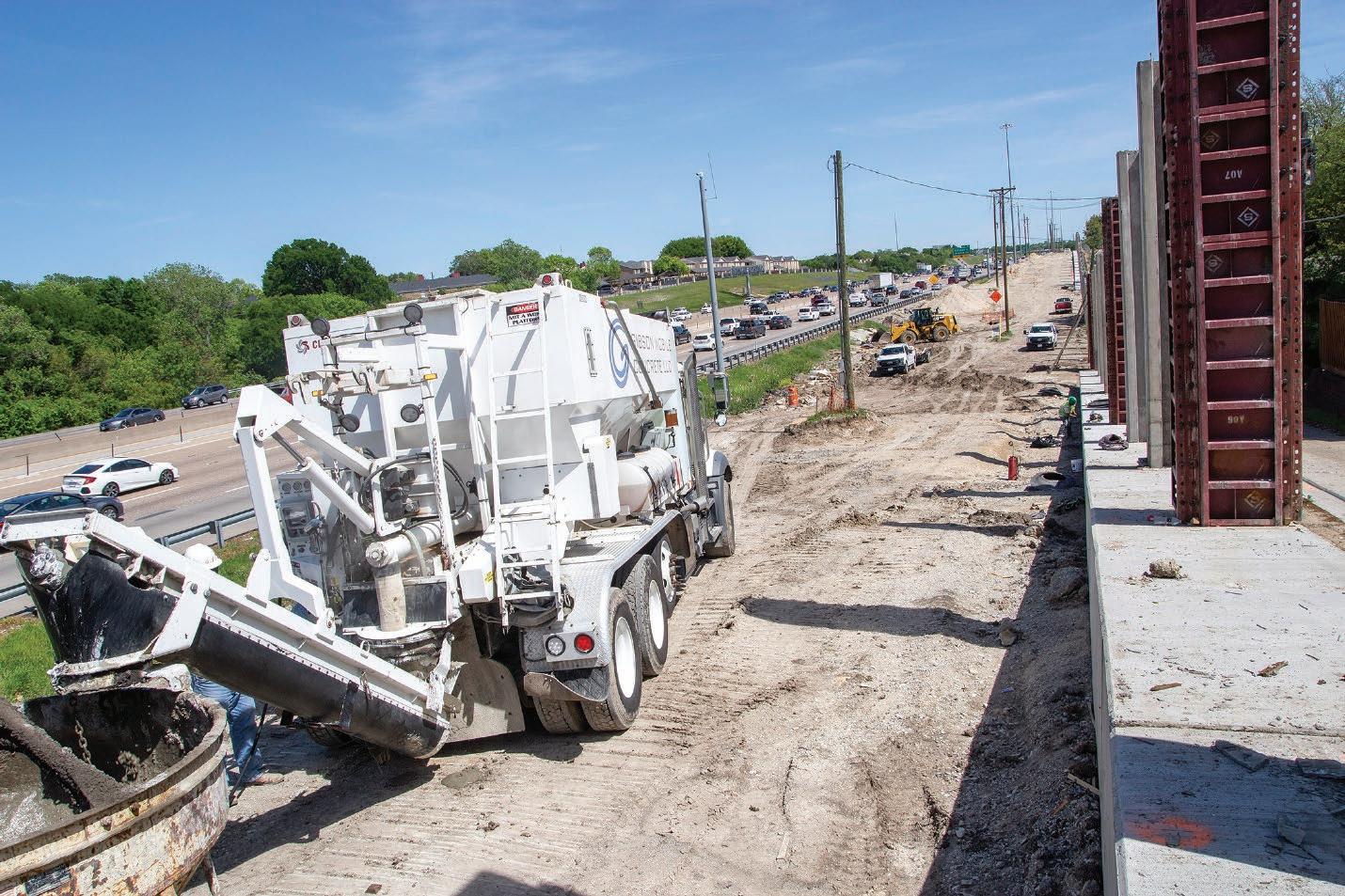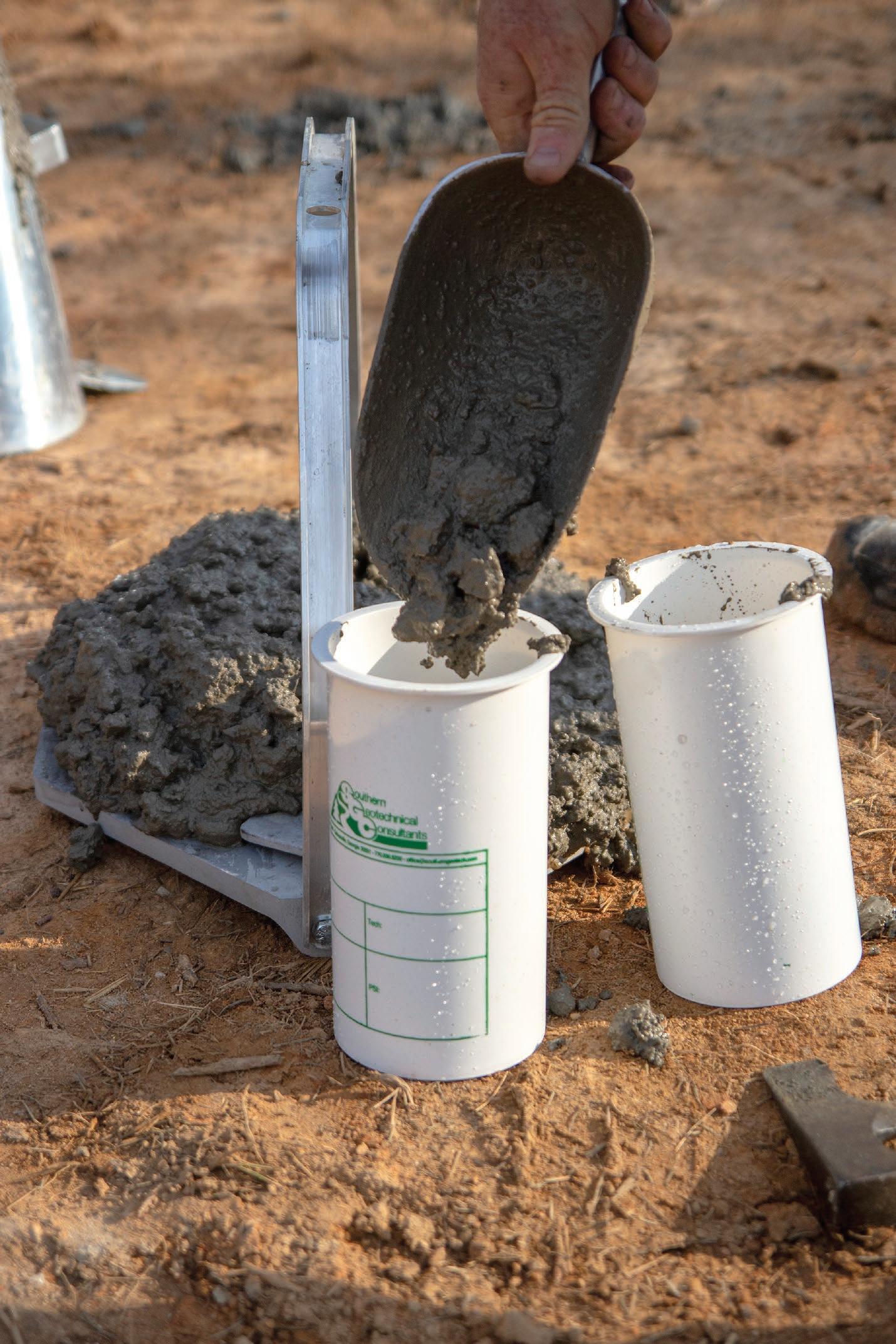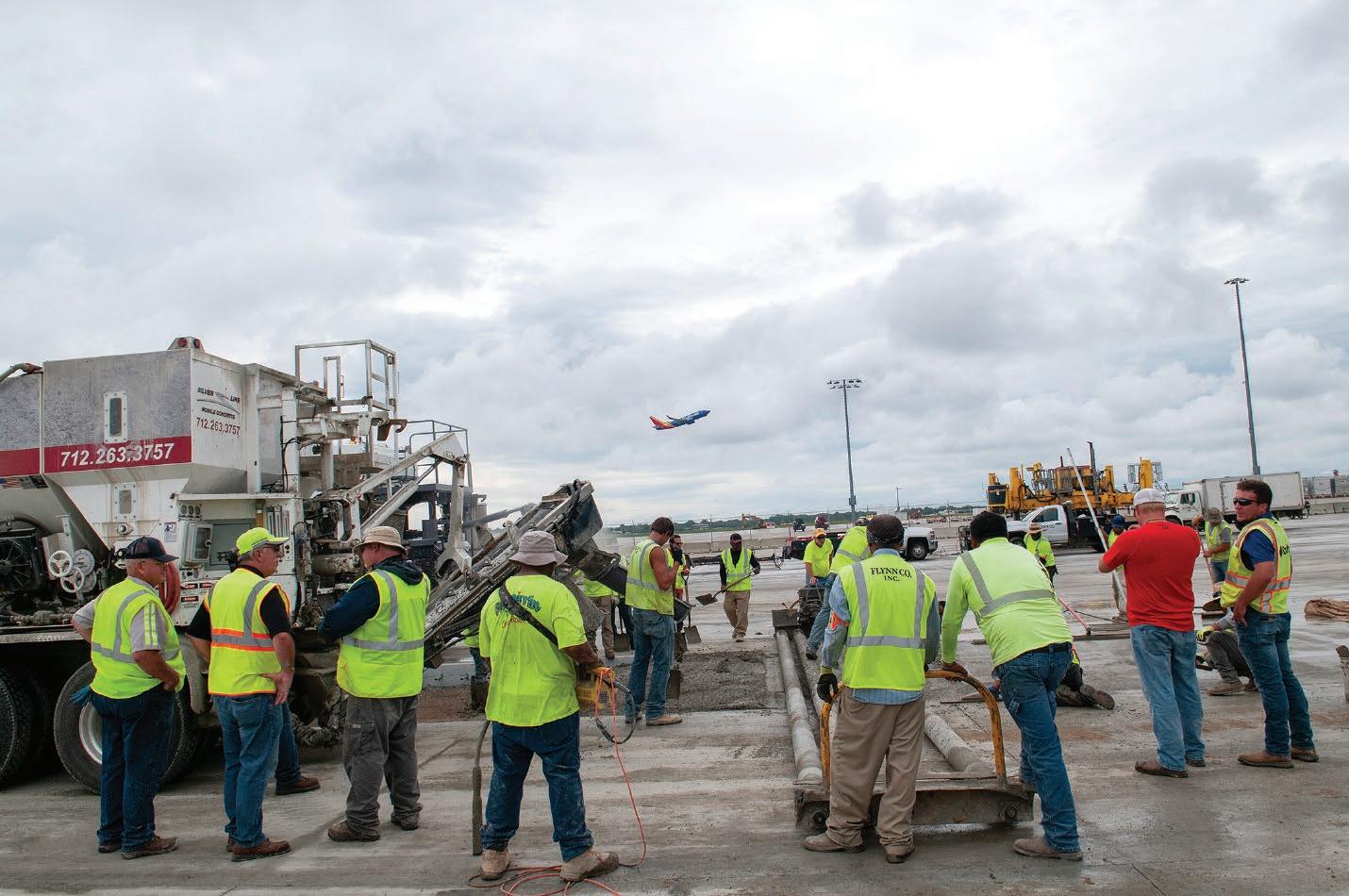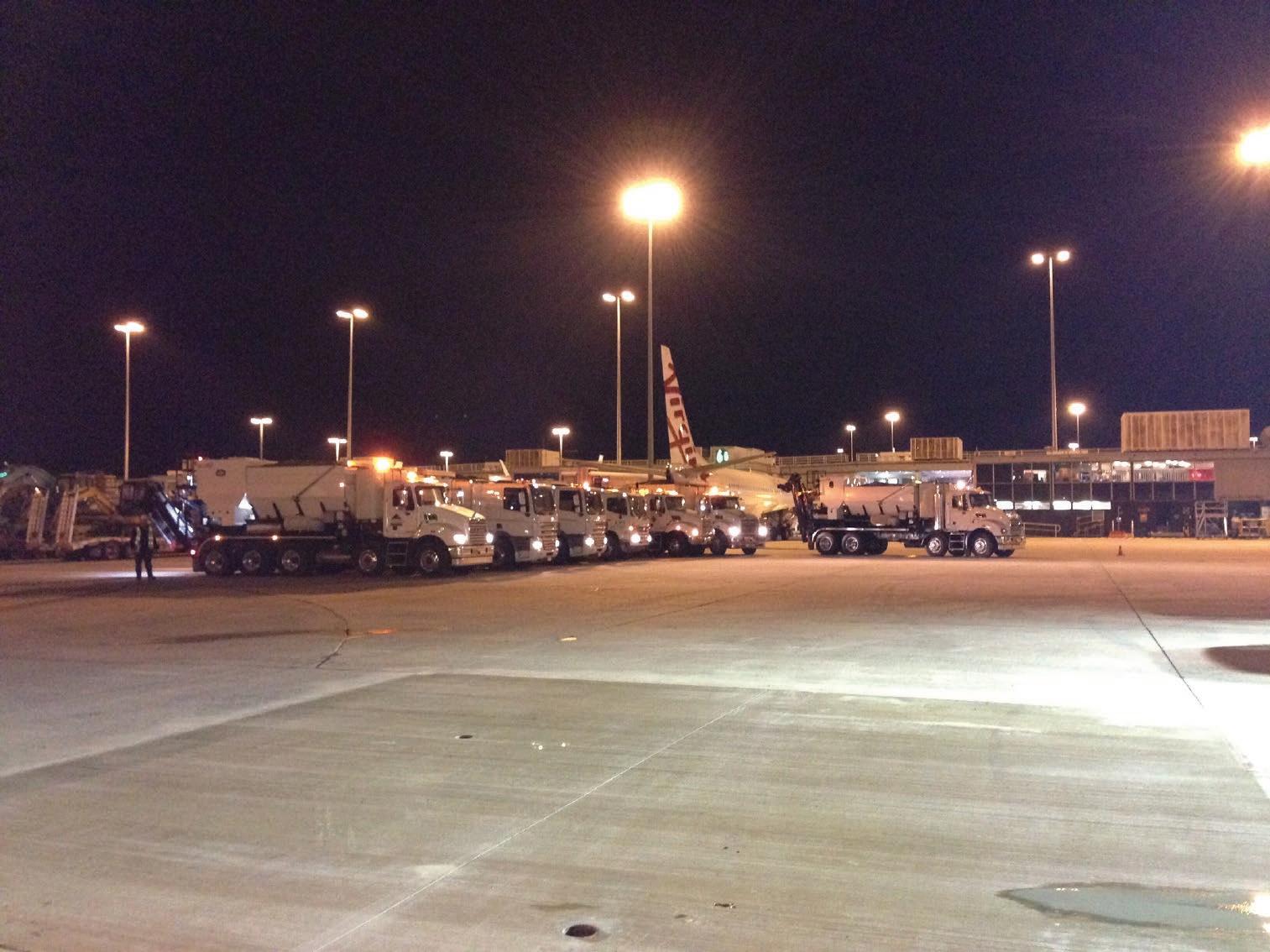
7 minute read
Key Issues to Consider When Choosing Mobile Concrete Production Plants for Airport Runway and Maintenance
Cemen Tech Inc.
FOR ANY airport, an out-of-service runway is not an option. In 2018, HartsfieldJackson Atlanta International Airport saw 107.4 million airline passengers, the most of all airports around the world a . With the global average growth rate in airline travel projected at 4.1 percent from 2017 to 2040, it will become more imperative for fast and effective runway installations and repairs. b
A 2003 report by the U.S. Government Accountability Office recommended new runway planning begin when an airport reaches 60 percent to 75 percent total annual flight capacity. While the recommendations focus on the U.S., many airports globally continue to see an increase in passenger and traffic volume which will increase their annual flight capacity. c
The flexibility of mobile concrete production lends itself to airport infrastructure and runway repairs. Each unit is pre-loaded with necessary aggregates, admixtures, and other materials and driven to the job site, reducing the amount of time and carbon emission generally associated with traditional batch plants. They allow entities, such as airports, to pour concrete when it is needed, which contributes to keeping a runway project on track.
Implications of Airport Runway Maintenance
Runway Maintenance Overview Generally, runway maintenance is the regular rehabilitation of the top surface layer, which wears with natural exposure and use over time. d How often a runway needs maintenance is frequently dictated by the type of surface. Many major commercial airports use concrete as the surface provides more durability and longer
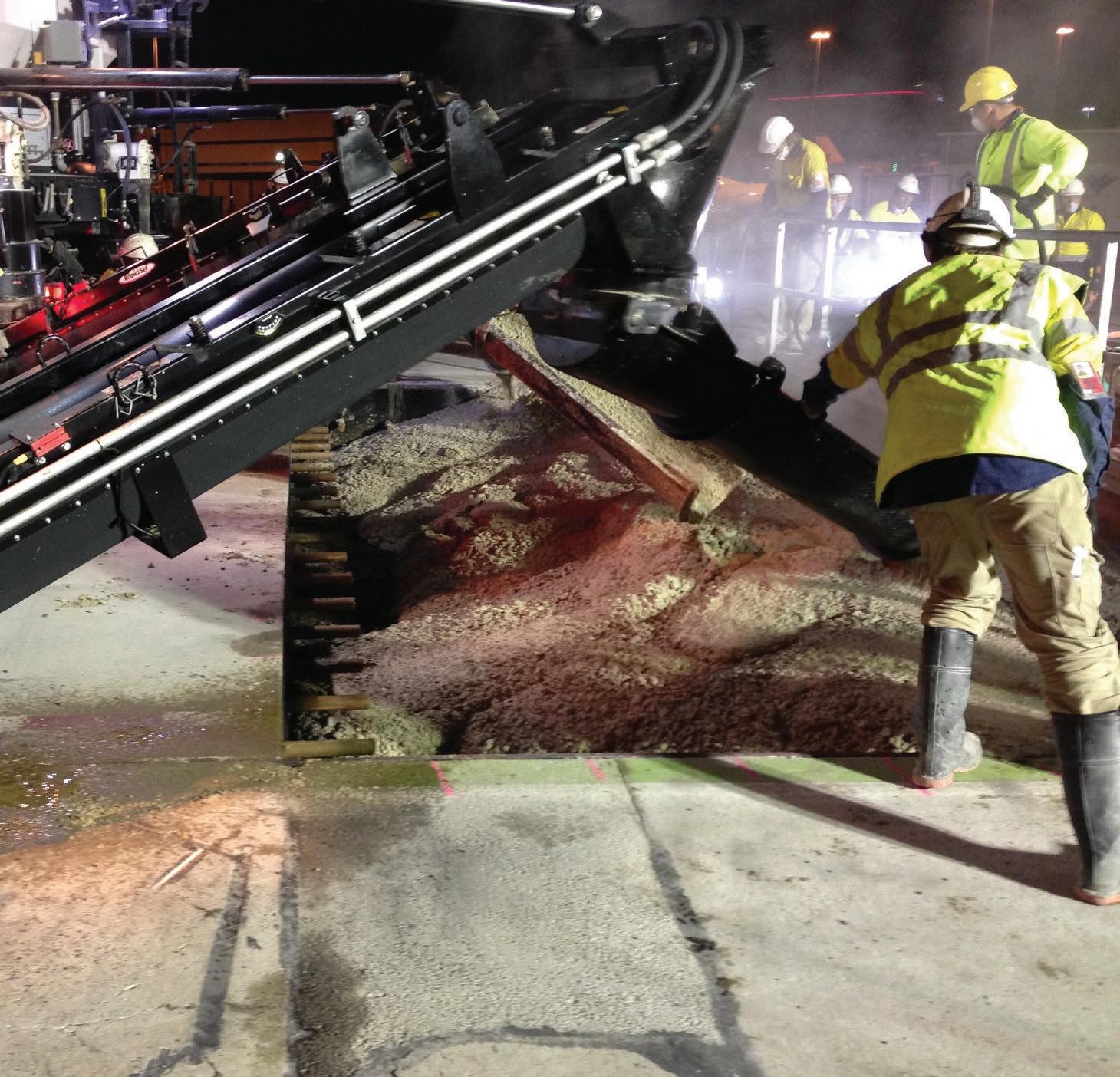
functional lifespan than asphalt. e Commonly, dowels and rebar provide structural support for the sections, which may reach depths of 16 inches to 21 inches each.
Because water creates a skid hazard for any aircraft, concrete runways feature grooves to allow drainage instead of pooling. The overall goal is to provide a landing surface with an appropriate amount of friction at all times.
Macrotexture The visible roughness of a runway – this texture allows water to escape, or drain, from underneath the aircraft’s tires. f Its importance increases alongside any development of aquaplaning factors.
Microtexture A fine-scale roughness - it is the small, individual aggregate particles detectable through touch. It is primarily important at low speeds as it allows the tire to break through the residual water film and gain traction on the runway.
Impact of Scheduled and Unscheduled Maintenance Paris-Orly Airport replaces one concrete slab per night to reduce disruption and to ensure runway has a complete overhaul every other year. g Despite the time and planning this proactive approach requires, it reduces the need for and impact of unscheduled maintenance should a runway display symptoms of failure. This is crucial, as the airport saw a 3.4 percent increase in passengers in 2018 with more than 33.1 million people flying to or through Paris-Orly. h
Financial Implications While scheduled maintenance is what every airport strives for, situations arise where financial incentives may be necessary for project completion. When this occurs, the incentives may or may not impact the project budget, depending on whether it was planned for from the onset.
Impact on Air Travel Emirates Airline announced in early 2019 the scheduled maintenance and subsequent closure of Dubai International Airport’s southern runway. i A major airport for international travelers, it was reduced to one runway during a six-week period. This resulted in the cancellation and/or retimed flights and other changes in operating aircraft. Since Emirates Airline served more than 58 million passengers in 2018, the impact of the runway closures likely caused numerous last-minute adjustments to travel plans for many passengers.
Volumetric Concrete Mixing
Fast Setting Formally called belitic calcium sulfoaluminate (BCSA) cement, concrete made with this type of
cement can be ready for traffic or other use within three to four hours. Although the cost of BCSA is a common concern – it is usually double the cost of Portland cement – the ability to reopen a runway in a short amount of time, therefore reducing the stresses on airport operations, mitigates this. Moreover, because the hydration process begins once the water, cement, and aggregates converge, it is essential to avoid mixing until crews are ready for concrete placement.
Mobile concrete mixers are ideal when using fast setting concrete due to the material’s rapid set-up time. Once mixed and subsequently poured, the concrete begins to set up within 30 minutes, decreasing the amount of downtime for a finishing crew.
Use of fast-setting concrete is extremely difficult, if not impossible, with a traditional barrel mixer. This is due to the immediate start of the hydration process, leaving a drastically reduced time frame to pour and place the concrete. If the mixer is delayed for any reason, or the finishing crew is not ready upon the mixer’s arrival, then the concrete may be deemed insufficient, wasting the load.
Fiber Reinforced Fiber-reinforced concrete has become a popular alternative to placing rebar or wire mesh in the form before pouring. The type of fiber added to the admixture varies based on the project but may include glass, natural, steel, and/or synthetic. It has been used in concrete work at numerous airports and airfields, including Norfolk Naval Air Station, John F. Kennedy International Airport, Chicago O’Hare International Airport, and London Heathrow Airport. j
High Slump This kind is often found in applications where high final strength is necessary for structural integrity, such as bridges and parking structures. Using a mobile concrete mixer in this type of setting allows for minimal work stoppage thus reducing traffic delays.
Pumped A concrete pump is frequently used when access and/or space limitations hamper a project. Because the mix is poured from the mixer directly into the pump, adequate viscosity is crucial. But using a volumetric concrete mixer gives you full control over the exact amount of water added and when. This not only improves the final quality of the concrete but diminishes the likelihood of a clogged pump.
Custom Concrete for Each Project Because the needs and use of a runway vary by airport and geographic region, each one must be built with those specifics in mind. Volumetric concrete mixers are designed and built with separate material storage and certain models can store pre-programmed mix designs. This allows for truly custom concrete for each runway repair and installation and the assurance the poured concrete is exactly what the project needs.
Conclusion
Formally announced by ACI Europe in June 2019, 194 airports in 24 European countries pledged to become net-zero for carbon emissions by 2050. k As air travel is projected to continue growing, airports and entities which oversee their maintenance and operations want means to keep this pledge. Mobile concrete production is one area which can help keep them on track through precise measuring and mixing. This translates to decreased carbon emissions as the equipment is driven to the job site before concrete production begins and less water usage during the process. Many mixers have the capability for technology and software integrations which can further
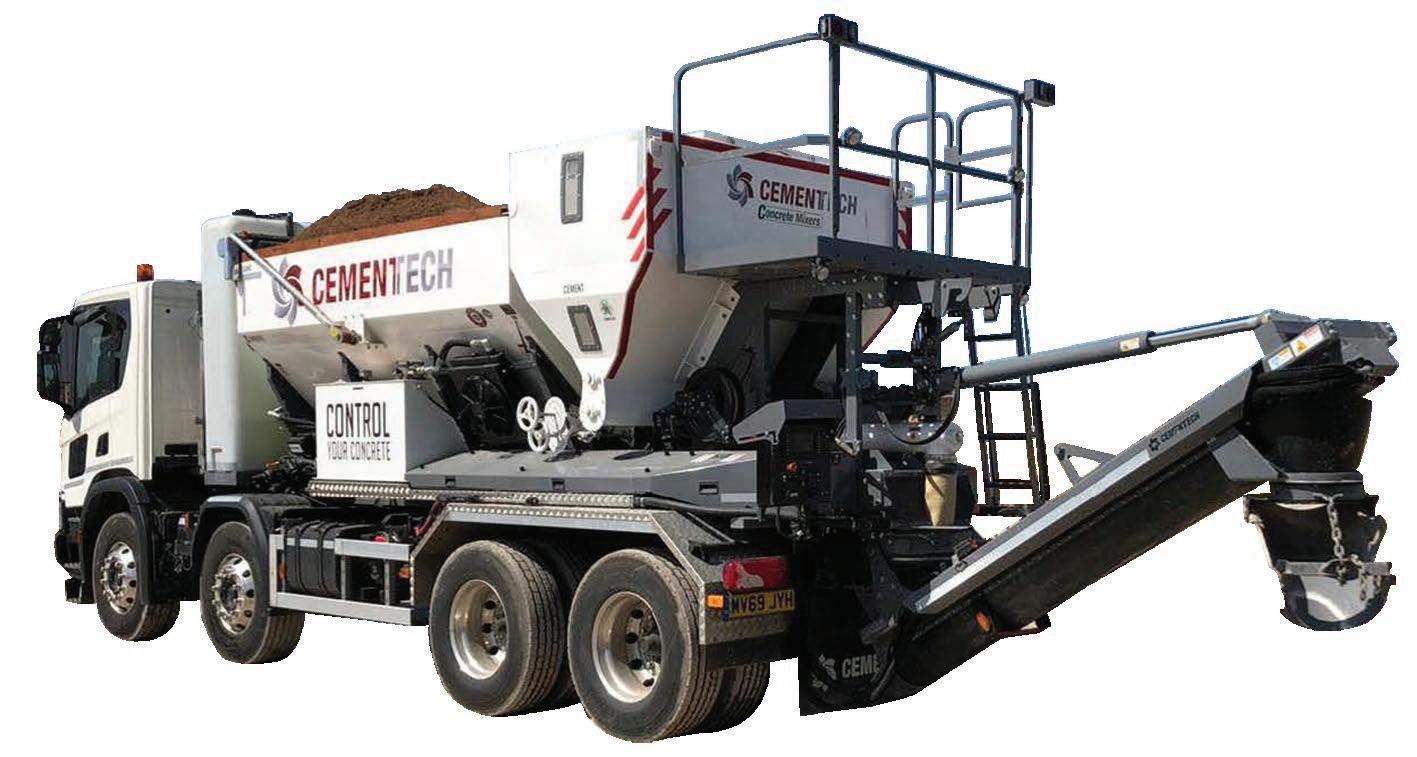
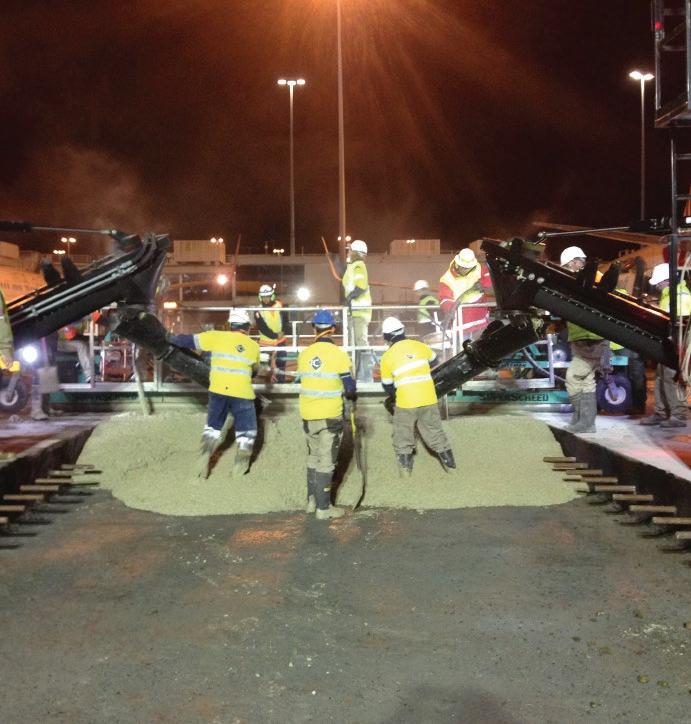
pinpoint inefficient areas, such as mixer runtime and aggregate usage. However seemingly small, these details can help a concrete producer and airport further refine their concrete needs and plan for future repairs and installations.
Furthermore, using volumetric mixers puts airports in control of how, when, and where needed concrete is mixed. This expedites airfield and runway repairs which, in turn, assuages scheduling conflicts and travel delays sooner for passengers. Additionally, costs related to the concrete decline as overage charges, short load, and disposal fees are eliminated because of the precision involved throughout. Labor and staffing expenses also decrease as fewer people are needed to complete each job – volumetric mixer drivers are called operators as they drive and operate the unit.
Having a volumetric mixer in the fleet of equipment means having the ability to pour concrete on schedule without the hassle and delays often associated with traditional barrel
CONCRETE AIRPORT RUNWAY DIRECTIONAL LINES

mixers. Many concrete producers who work with airports and related entities either use or are beginning to use volumetric mixers in their operations. This shift in concrete production provides many short- and long-term benefits to everyone involved in and benefiting from airport infrastructure repairs.
References:
a
b
c
d
e
f
g
h
i
j
k https://www.cnn.com/travel/article/worlds-busiest-airports-2018-preliminary/index.html https://aci.aero/wp-content/uploads/2018/11/WATR_WATF_Infographic_Web.pdf https://www.gao.gov/new.items/d03164.pdf https://www.skybrary.aero/index.php/Runway_Maintenance http://www.nycaviation.com/2015/01/built-last-runways-built/37734 https://www.skybrary.aero/index.php/Runway_Surface_Friction https://bit.ly/3gamgTU https://bit.ly/3f5WLBQ https://bit.ly/2P4zNR0 https://intrans.iastate.edu/app/uploads/2019/04/FRC_overlays_tech_ovw_w_cvr.pdf https://bit.ly/30zSxhQ

